MARKET OVERVIEW
The Global Safety Helmet Market is a key market segment within the personal protective equipment segment concerning different industries with a head protection requirement. Construction, manufacturing, mining, oil and gas, and transportation are among the areas that will not cease in establishing the demand for safety helmets designed to minimize the risk of head injuries. There will be stronger government regulatory initiatives for workplace safety that will see much of an organization becoming proponents for the adoption of new technologies within helmets to boost their durability, comfort, and protection from impact.
Safety helmets act as primary guardrails in hazardous environments. The Global Safety Helmet Market will vary according to the field-specific requirements of the industry, ensuring that designs match the conditions under which they would be used. Construction site helmets will have provisions to cushion impact from falling debris, whereas industrial-use helmets will be designed to resist chemical components and extremes of temperature. Innovations in advanced materials such as high-density polyethylene, fiberglass-composite, and carbon fiber will have the greatest impact on the structural integrity of these protective headgears.
The Global Safety Helmet Market will involve the continuing development of safety helmet innovations. Manufacturers will employ smart technologies, including sensors for measuring impact level or detecting environmental conditions. Connected helmets transferring real-time data will allow employees' metrics for safety to be tracked and hazards to be responded to more efficiently. These would include improvements in comfort through air-move systems, ergonomics, and such things as custom suspensions.
Transportation and logistics will greatly guide the Global Safety Helmet Market. The need for more advanced features like improved impact absorption and aerodynamics will increase to meet the growing numbers of two-wheelers available for personal and commercial use. The rider will seek superior benefits in comfort combined with superior safety, a light yet durable material, and even smarter visors that can be anti-fog and glare limited to enhance visibility and experience.
The Global Safety Helmet Market will grow in technological advances when eco-friendliness is considered and matters these days. Manufacturers, who are concerned with mitigating environmental impact, will embark upon the manufacture of helmets using recyclable materials and biodegradable substances. These helmets, designed using modular components, will support extended usability since users will be able to replace individual parts rather than consigning the whole helmet to the bin. The sustainability drive promotes the ever-increasing emphasis on corporate social responsibility pertaining to industries.
The government regulations and safety standards will significantly influence the future of the Global Safety Helmet Market. Adherence to industry-specific guidelines will foster innovations that will ensure the safety helmets deliver on the promise of prescribed safety benchmarks. Research and development will remain viable means through which companies will keep on introducing helmet models in compliance with regional and international safety protocols. Certification and rigorous testing would continue to be the most important ways of ensuring product trustworthiness and market acceptance.
As developments in infrastructure projects, industrial automation, and ever-changing definitions of workplace safety keep feeding the Global Safety Helmet Market from the foreground, the other ways through which safety helmets are being accepted in protecting employees will remain pertinent. The integration of technology, sustainability policies, and regulatory approaches will continue shaping the development of products. Safety helmets will therefore continually remain significant in product development into the foreseeable future. The industry, on the other hand, will respond to new challenges and ensure that protective headgear responds to the growing needs of the many different work environments.
Global Safety Helmet market is estimated to reach $9,113.50 Million by 2032; growing at a CAGR of 7.8% from 2025 to 2032.
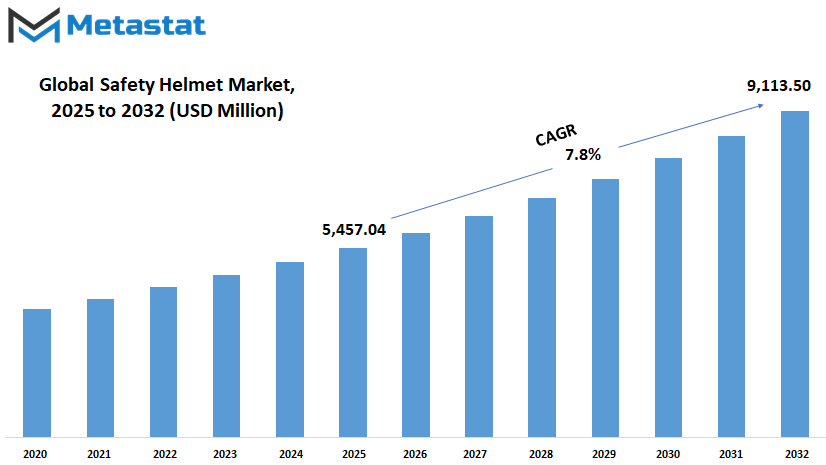
GROWTH FACTORS
The Global Safety Helmet Market is anticipated to rise in the years to come owing to the increasing awareness regarding safety at workplaces. The emphasis on protecting workers from head injuries has increased from industries like construction, manufacturing, and mining. The reason behind this demand would be putting strict safety guidelines by governments and regulatory bodies and the necessity for compliance by industries. As organizations are being focused on reducing the numbers of accidents at work, the newer generation safety helmets would be required.
Advancements in technologies are one major driving force behind this market. Manufacturers are improving their helmets by including extra features, such as impact sensors, real-time monitoring, and quality ventilation. These innovations are meant to make the personal protective equipment more beneficial and comfortable for the employees. The advanced smart technology more likely with its capabilities in smart connectivity and mobile device connection as well as augmented reality is expected to add more features to the helmets. Besides, companies are trying to switch to lightweight and durable materials to improve performance yet without compromising safety.
An additional factor that affects the growth of the market is increased adoption of these safety measures in the developing areas. The industrial developing countries that are emerging are investing their resources for ensuring safety within the workplace to be at par with the international standard. As a result, this has increased demand for protective equipment helmets. Partly because of the efforts of insurance and labor unions, promotion is giving way for such coverage to encourage employers to provide high-quality materials for safety equipment-on reducing workplace injury risks.
Even with such growth drivers, some factors might hinder the expansion of the market. One of the key things which would act as a roadblock is the cost of high-tech helmets. It might not be individual's well off to purchase the latest such helmets, especially small scale and even medium-sized industries. There is also limited awareness in certain regions about using proper safety equipment, hindering growth. The limited demand is also a result of some mastered workers who may be deprived of a functional helmet because of the discomfort or wrong perception regarding its necessity.
However, a great opportunity is emerging to bring this market into the future. Sustainability is seen as a major emphasis for making the development of helmets an eco-friendly course, producing recyclable helmets. It might be a competitive advantage for companies that are committed to sustainability as environmental regulations have become increasingly stricter. The advanced capabilities of automation and artificial intelligence might also lead to improvements in helmet safety features, thus increasing market demand.
The Global Safety Helmet Market is being anticipated to witness a continuous stride owing to the ongoing developments and increase in safety awareness. Industries will continue to develop, and regulations are becoming strict; hence, the future will keep on making high demands for reliable protective equipment, which would pave the way for further innovation and market growth.
MARKET SEGMENTATION
By Product
Rising awareness in Ig safety measures to cut down on workplace injury, particularly that of the head injury, is fueling this growth. Also, the construction, manufacturing, and mining sectors are at the forefront of the introduction of such stringent safety regulations to promote the demand for protective headwear. The expectation for safety helmets will increase following the construction of infrastructure, including airports, harbors, highways, and railways.
In terms of safety helmets, the products are principally classified into hard hats and bump caps. Hard hats are traditionally the mainstay of the market, occupying considerable revenue share, all due to their prevalent use in high-risk environments. Hard hats protect against impacts and falling objects, rendering them vital at construction sites and heavy industrial settings. On the contrary, bump caps are becoming popular under conditions of low head injury risk. They are quite light and comfortable to wear in settings like warehouses or automotive workshops, where bump caps protect against minor injuries like bumps and scrapes.
Materials used in making safety helmets very much determine their efficiency and popularity. Polyethylene helmets have been the market's leaders mainly due to their cheaper prices and fitness for protection per se. Their pricing makes them accessible to myriad industries, especially those operating on tight budgets. On the contrary, helmets made with Acrylonitrile Butadiene Styrene (ABS) will witness rapid growth at a CAGR of 8.5% from 2025 to 2030. The rapid growth in demand for ABS helmets and their durability, dimensional stability, and chemical resistance make them the choice for manufacturing and chemical processing industries.
By Material
The global safety helmet market is anticipated to grow tremendously from now on, in the emerging awareness for safety in the workplace and strict laws concerning various industries. Safety helmets are chiefly manufactured using polyethylene (PE), acrylonitrile butadiene styrene (ABS), and polycarbonate (PC)-all being materials having peculiar traits according to needs for specific industries.
For its lightweight and durable nature, polyethylene has been one of the suitable materials for making safety helmets. The cost-effectiveness and the sufficiently protective nature make this material suitable for construction and manufacturing industries, among others. The polyethylene segment had a very significant part of the market share of the safety helmet market in 2022. Forecasts show that the segment may keep on growing steadily and thus continue holding its important share in the market.
Another material catching up quickly in the safety helmet market is acrylonitrile butadiene styrene. It has strength and flexibility ratios balanced to quite an extent and thus will help achieve higher levels of impact resistance. It is therefore used more in situations requiring more protective applications like the mining industry and heavy industrial operations. According to projections, the ABS segment is anticipated to record the highest growth rate among the other materials reflecting a trend of increased preference towards improved safety features in helmets.
Polycarbonate is another notable material largely used in the manufacture of safety helmets, well known for its high impact resistance and clarity. Good though it is, the material gets denied its widespread use because it is amount higher than PE and ABS. The polycarbonate segment will grow gradually owing to the improvements of manufacturing technologies coupled with the focus towards safety of the worker. This may encourage even more adoption of high-performance helmets typically associated with the oil and gas industry while not taking much weight into the cost implications.
Regions such as India have shown a very positive growth trend in the safety helmet market. An industrial build-up in the country coupled with much-needed occupational safety promotion has contributed to the increased demand for quality safety equipment. Also in India, the polyethylene segment in 2022 dominated the market of safety helmets, which is worth mentioning in terms of its cost-effectiveness as well as suitability for various applications. The segment pertaining to ABS is expected to grow at the highest rate, marking a trend toward more protective helmets.
For the future, the present global safety helmet market will likely be transformed by technology advances and materials innovations, toward the ends of developing helmets that even have standards no less than safety ones but add value of comfort and adaptability for different work environments in which they're used.
By End-user
Safety in production and protection of workers is a top priority in industries, which in turn will lead to further growth in the Global Safety Helmet market. It provides a second line of defense in preventing injuries at work for different kinds of industries, including construction, manufacturing, mining, and those industries where hazards are a common concern. With the focus on worker safety, demand is increasing for advanced helmets which offer better materials, design, and technology.
Construction stands a bigger market in the coming years. Urbanization will create a need for more measures in infrastructure projects. Companies will invest in helmets offering impact protection along with other features such as communication systems and real-time monitoring. Smart helmets will have sensors that might become standard, to offer detection of head injuries or alert workers' attention to risks. The demands for higher standards in construction will help adopt good helmet standards, shielding workers from harsh environments.
Manufacturing will go above and beyond to promote these types of helmets. Factories and industrial plants will incorporate improved safety measures, making helmets fundamental. These employers will look for designs that not only favor comfort and durability but also reduce fatigue whilst on duty for long hours. The incorporation of augmented reality and heads-up display will serve helmet wearers whilst accomplishing their safety responsibilities. Corporations will be looking for dual-focus solutions for protection and operations to limit the risks associated with carrying out a task.
To be clear, mining is continuously another index sector for safety helmets. Day after day, miners are subjected to dangerous working conditions. Therefore, an increase in the demand for helmets that provide enhanced visibility and protection from impact as well as environmental monitoring is expected. The demand for helmets equipped with air filtration systems combined with thermal insulation shall, in all likelihood, become the norm in underground mining, where the air quality conditions risking the life of miners and temperature differentials are threatening. The presence of wireless communication will facilitate worker coordination and eliminate accidents due to miscommunication. Expansion in the mining operations towards the remote frontiers will create a need for helmets with efficient GPS tracking and emergency alerts.
Besides these industries, others will open a channel for market proliferation. Energy, transportation, and logistics will require safety helmets with advanced technology to comply with new standards of workplace safety. With the capital set to grow automation, workers will engage more with machinery thus increasing the demand for protective headgear against injuries from unexpected malfunctions.
Innovation in existing materials and designs will form the forefront of any technology advancement in the Global Safety Helmet market. Lightweight, highly durable helmets will replace those older models that compromised user comfort. The consideration of sustainable materials will gain momentum as companies aim to reduce environmental footprint.
|
Forecast Period |
2025-2032 |
|
Market Size in 2025 |
$5,457.04 million |
|
Market Size by 2032 |
$9,113.50 Million |
|
Growth Rate from 2025 to 2032 |
7.8% |
|
Base Year |
2024 |
|
Regions Covered |
North America, Europe, Asia-Pacific, South America, Middle East & Africa |
REGIONAL ANALYSIS
In North America, expansion is rapid because of the hard-hitting safety regulations and increased awareness concerning safety and health at work. This is also true for the United States of America and Canada as they boast substantial industrial activities backed by rigorous occupational safety standards by organizations like OSHA (Occupational Safety and Health Administration). This concern for safety implies that there are more advanced safety helmets demanded, offering better levels of impact resistance and comfort.
Furthermore, Europe occupies a sizable part of the market by the stringent safety standards and the push for worker protection. The total interest of safety helmets across industries has been achieved primarily due to the various directives created by the European Union on workplace safety. At the same time, there is a pronounced growing trend toward smart safety helmets that contain built-in communication and monitoring devices which should be in favor of this region in the future.
Asia-Pacific is evolving into a rapidly propelling security helmet market that is a result of industrialization and infrastructure expansion. Construction projects are coming up in China, India, and Japan nearly every day with new manufacturing activities and arousing safety equipment demand. Rising awareness of workplace safety and stricter safety regulations introduced has among other factors contributed to the safety helmet demand in this region.
The promises here for the Middle East and Africa are enormous when coupled with the bigger investments done in the construction and infrastructure segments, indicated by UAE, Saudi Arabia, and South Africa. The growing worry of safety during working hours has reinforced the international standards laid down as per safety, which are driving markets in that region.
Latin America is rapidly coming up as an emerging region for safety helmet demand, with countries such as Brazil and Mexico emerging at the frontier. Safety helmet demand in the region is thus spurred on by the increasing awareness of occupation safety as well as heightened industrial activities.
The Global Safety Helmet Market is coming on to a gross promising growth, with every region contributing to it differently based on industrial activity, legislation, and emphasis on workplace safety. With the rising trend of safety at work, coupled by pertinent advanced technologies, safety helmets will be in demand as well globally.
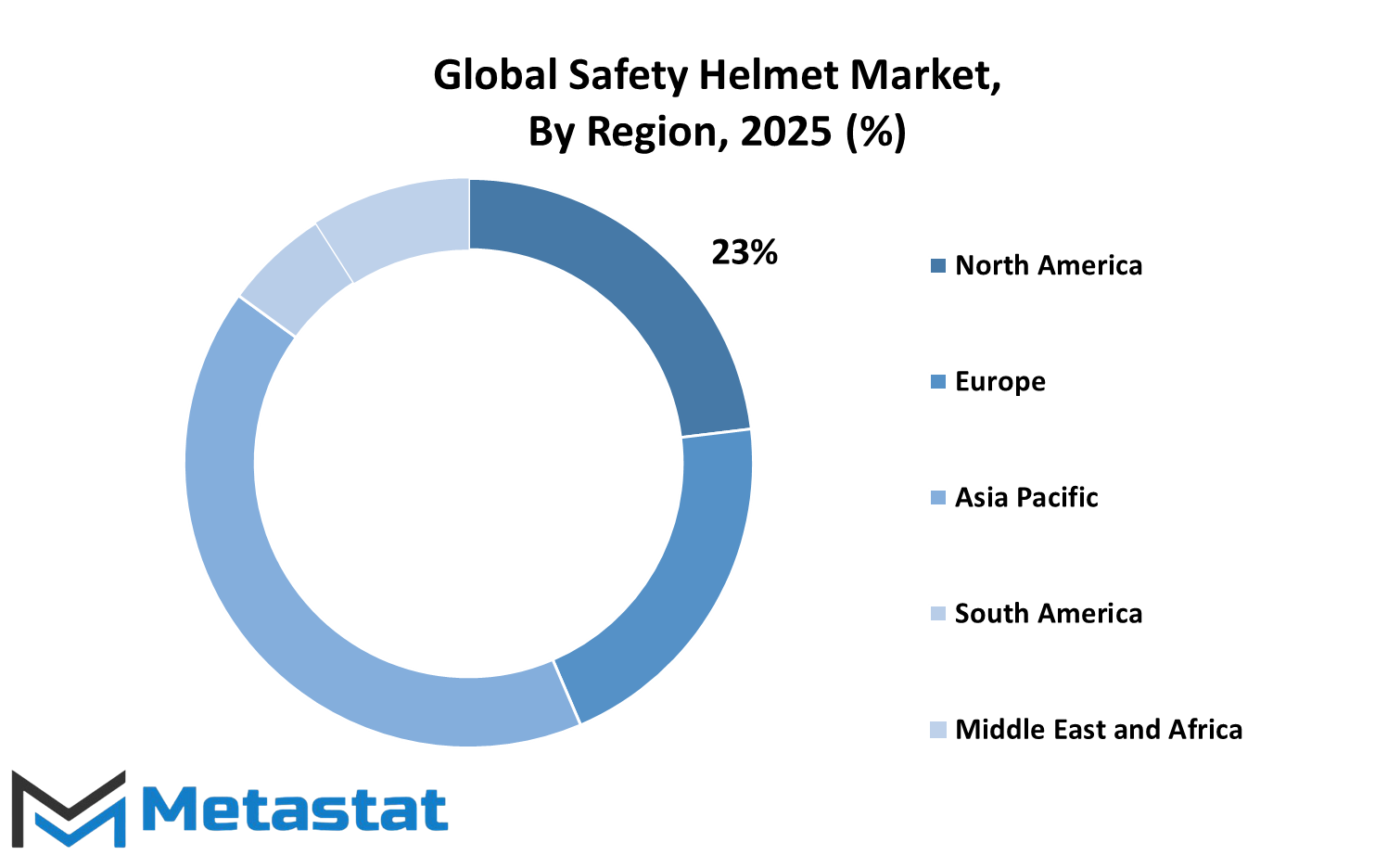
COMPETITIVE PLAYERS
The demand for safety helmets is expected to rise as industries across the globe start focusing more on worker protection. Enhanced awareness regarding workplace safety with stringent regulations compels companies to invest in advanced protective equipment. The Global Safety Helmet market is bound to witness major transformations with technology coming together with protective headgear provision for better safety and comfort. Companies are working on concepts that deliver better impact resistance and ventilation while also providing functionalities that help workers in the field stay connected.
Innovation is the force that is heralding the industry's new dawn, with smart helmets standing to emerge an industry game-changer. These helmets are currently designed with sensors that detect hazardous conditions, built-in communication, and even augmented reality assistance for workers in extremely complex environments. As construction, manufacturing, mining, and oil & gas continue to expand, the demand for dependable protective equipment will create stiffer competition among the key players. Companies are focusing on materials that are stronger and more resistant while still being light so that the workers experience no discomfort for long hours.
The Global Safety Helmet market will witness competitive players trying to set themselves apart by introducing advanced technologies in helmets. Well established brands like 3M Company, Honeywell International Inc., and MSA Safety Incorporated in high-quality product lines will stretch their limits in innovation. Others like Nolan Helmets, Bullard, JSP Limited, and Centurion Safety Products Ltd. are also putting a lot of money into R&D to further their developments. With increasing concerns about workplace accidents, demand for helmets with real-time monitoring capabilities will grow. This opens the door for companies such as KARAM, Schuberth GmbH, and uvex group to consider new designs that combine elements of protection and functionality.
To remain competitive, companies will have to design helmets for industry-specific applications. Pyramex Safety Products LLC, Bell Helmets, and Shark Helmets, for example, tend to focus on models that can be used in the industrial as well as motorcycling setting. On the other hand, Concord Helmet & Safety Products Pvt Ltd, Dainese S.p.A., and AGV SpA are working on gear that is protective in extreme conditions. Market dynamics are also being shaped by Arai Helmet, Ltd., Shoei Co., Ltd., and LS2 Helmets, who are integrating advanced safety features into their helmets.
As industries tend toward automation and digital transformation, safety helmet industries will equally move in that direction. Smart helmets, sustainable materials, and AI-led safety features will come to redefine workplace protection. Ensuring high-quality protective headgear for workers in various industries will keep competitive players on their toes to adapt to these trends.
Safety Helmet Market Key Segments:
By Product
- Hard Hats
- Bump Caps
By Material
- Polyethylene
- Acrylonitrile Butadiene Styrene
- Polycarbonate
- Others
By End-user
- Construction
- Manufacturing
- Mining
- Others
Key Global Safety Helmet Industry Players
- 3M Company
- Honeywell International Inc.
- MSA Safety Incorporated
- Nolan Helmets
- Bullard
- JSP Limited
- Centurion Safety Products Ltd.
- KARAM
- Schuberth GmbH
- uvex group
- Pyramex Safety Products LLC
- Bell Helmets
- Shark Helmets
- Concord Helmet & Safety Products Pvt Ltd
- Dainese S.p.A.
WHAT REPORT PROVIDES
- Full in-depth analysis of the parent Industry
- Important changes in market and its dynamics
- Segmentation details of the market
- Former, on-going, and projected market analysis in terms of volume and value
- Assessment of niche industry developments
- Market share analysis
- Key strategies of major players
- Emerging segments and regional growth potential



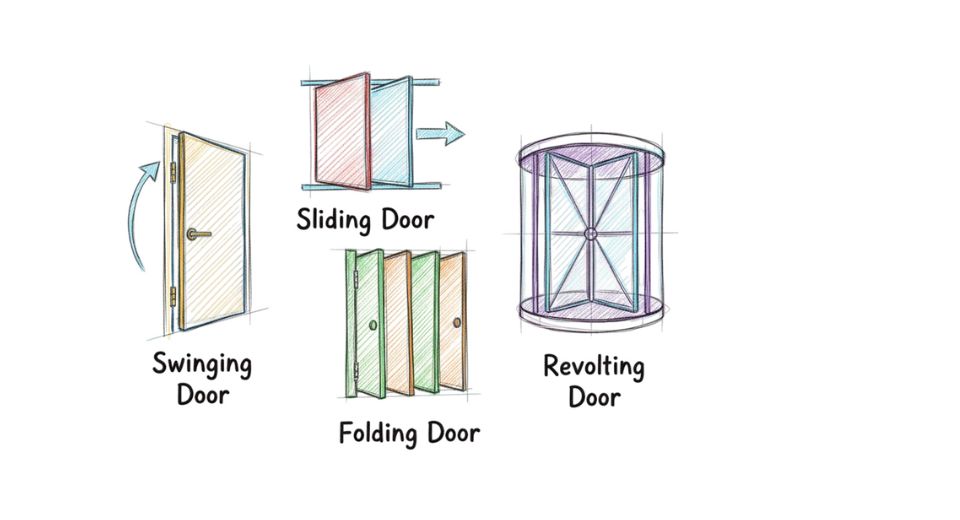
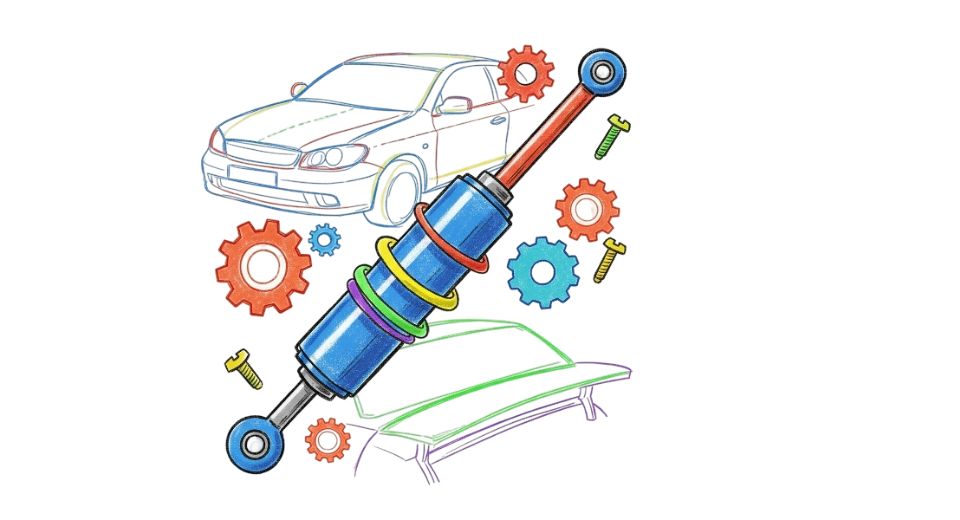
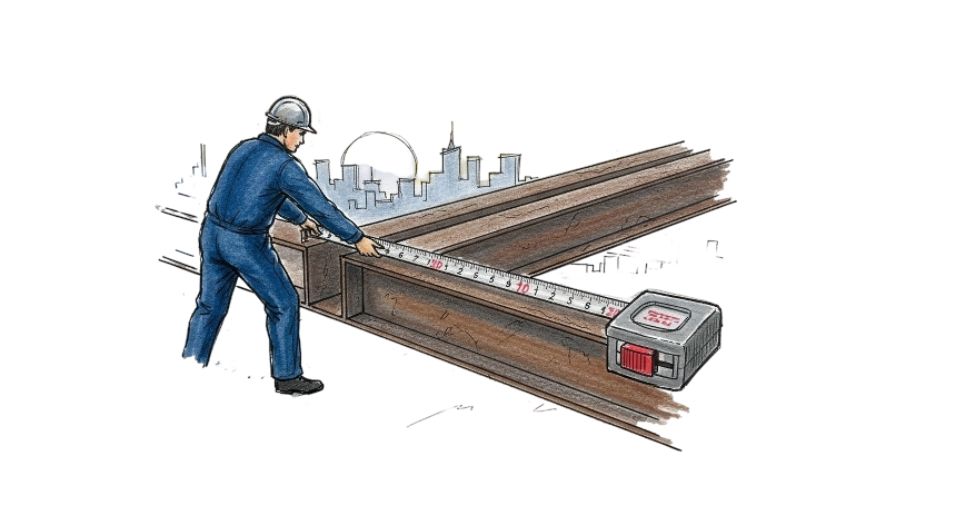
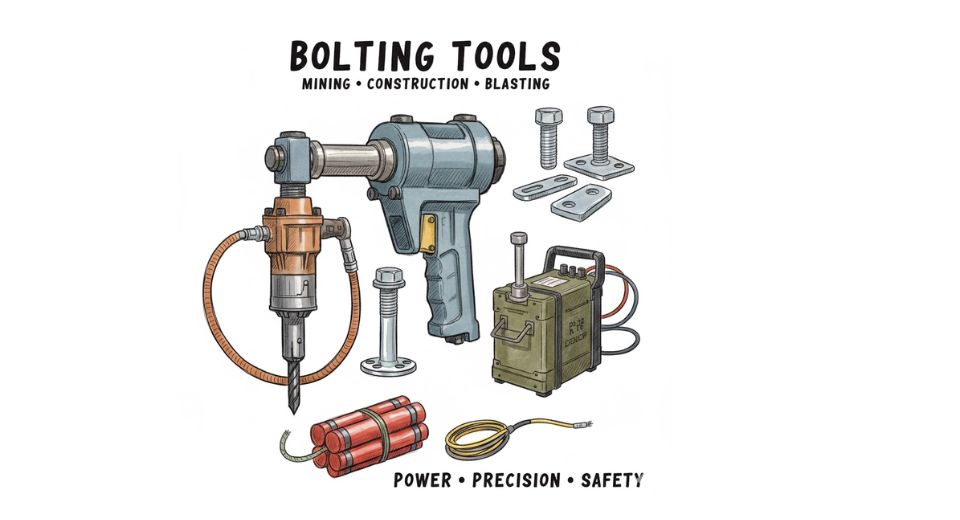

 US: +1 3023308252
US: +1 3023308252






